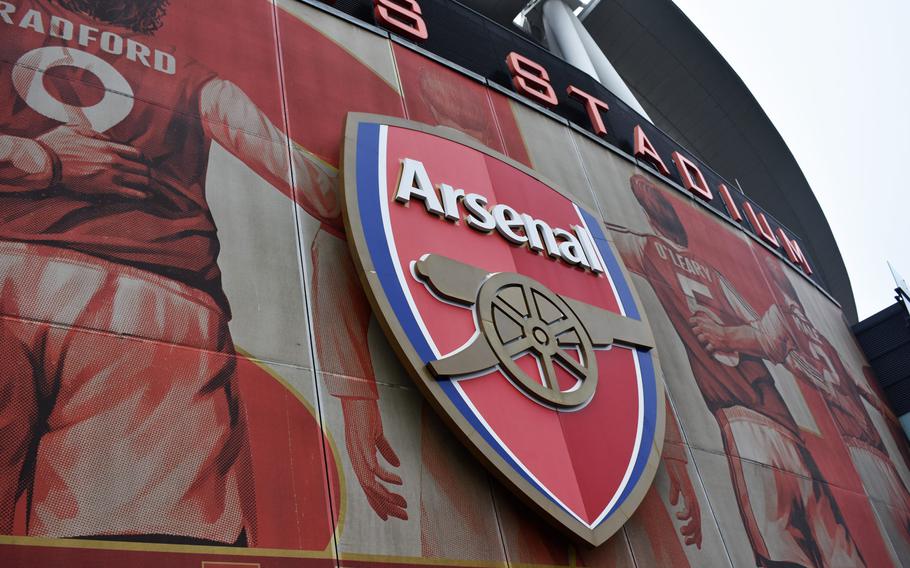
The logo of the Arsenal soccer team and a mural of legendary Arsenal players adorn the outside of Emirates Stadium in London. The team's "Arsenalization" project increased the amount of historic Arsenal imagery on the new, modern stadium. (Courtesy of Jackie Broome)
There are so many worthy ways to spend one’s time in London that a tour of a soccer stadium might not rank high on many visitors’ lists. But a walk through one of the 20-odd such facilities dotting the city and its surrounding region offers a valuable insight into an essential part of British culture.
Emirates Stadium, home of the Premier League club Arsenal, isn’t the largest of its kind in London; that honor goes to the better-known Wembley Stadium. And it’s certainly not the oldest, having just been completed in 2006. But in its fusion of the historic and the modern, in the way it dominates a neighborhood while also attempting to embed into it, Emirates Stadium is perhaps the quintessential London football stadium.
For reasons too complicated to fully explore in this space, Arsenal moved on from its historic home, Highbury, in the late 1990s and selected a nearby tract of industrial land on which to build a larger, more lucrative replacement. Emirates, the Dubai-based airline, purchased sponsorship rights to the stadium and the team’s uniforms. But the sophisticated new building was too sterile for many passionate Arsenal supporters, and the club sought to appease those fans with a project known as “Arsenalization.”
The results of that effort are unmistakable. The massive structure is wrapped in soaring murals of Arsenal players arranged with their arms around each other, symbolically encircling the monolithic building in the club’s storied history. Arsenal legends are captured mid-kick in statues arranged around the stadium. Inside, a section of seats on the lower bowl are painted to present an image of the club’s iconic cannon insignia.
The tour of the stadium, self-guided with the aid of a tablet-like device and headphones presented at entry, immerses visitors even deeper into the club’s world. The path winds through behind-the-scenes sites like the locker rooms, training facilities and the tunnel leading to the field. One can spend time in the opulent environs offered to the team’s executives and distinguished visitors, then occupy the same field-level chairs that host the Arsenal coaches and players on match days.
All told, it’s an unforgettable experience not just for the devoted soccer fan, but for any visitor looking for a new angle from which to view London.
broome.gregory@stripes.com Twitter: @broomestripes
DIRECTIONS: Located at Homsey Road in northern London. There’s an Arsenal stop on the Piccadilly line of the Underground just a short walk from the stadium.
TIMES: Tours run from 10 a.m. to 5 p.m. on weekdays, 9:30 a.m. to 6 p.m. Saturdays and 10 a.m. to 4 p.m. Sundays. Those times are subject to change due to events at the stadium, particularly soccer games.
COSTS: Purchased in advance online at arsenal.com, adults pay 25 pounds ($32.65), students and senior citizens pay 20 pounds and children from 5 to 15 pay 16 pounds.
FOOD: There’s a small concession stand just outside the stadium, and lots of dining options in the surrounding area.
INFORMATION: Arsenal gear is not required, but seems to be strongly encouraged; they’ll happily sell you some in the gift shop if you come unprepared.